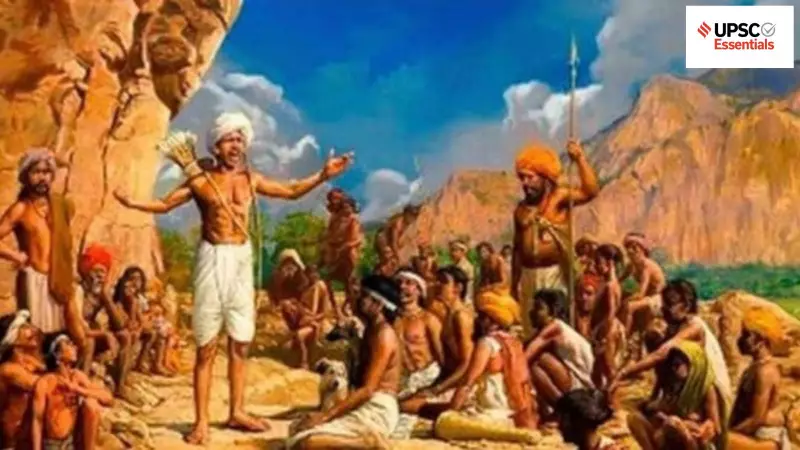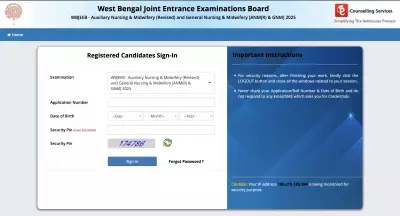
UPSC Mains Answer Writing Practice: GS Paper 1 Essential Questions
As Civil Services Exam 2026 preparation intensifies, UPSC Essentials presents its weekly mains answer writing initiative covering crucial topics from the General Studies Paper 1 syllabus. This comprehensive practice session focuses on two significant areas that demand thorough understanding and analytical thinking from aspirants.
Commemorating Birsa Munda: Reflecting on Ulgulan Movement's Legacy
The year 2025 marks 150 years since the birth of Birsa Munda, providing a significant opportunity to examine his enduring legacy and the Ulgulan movement he led. This tribal uprising represents a critical chapter in India's freedom struggle that deserves detailed analysis for UPSC preparation.
Historical Context and Significance
Before British colonial rule established itself in tribal regions, the traditional land ownership system known as khuntkatti prevailed, based on customary rights without landlord intervention. The introduction of the Permanent Settlement Act of 1793 dramatically transformed this landscape, creating the zamindari system that displaced indigenous communities from lands they had cultivated for generations.
Birsa Munda launched the Ulgulan movement in 1899, employing guerrilla warfare tactics and traditional weapons to resist colonial oppression. He inspired tribal communities to establish Birsa Raj and refuse compliance with British laws and rent payments. Despite its eventual suppression by superior British forces, with Munda's arrest occurring on March 3, 1900, the movement left an indelible mark on India's tribal resistance history.
Contemporary Recognition and Revival
In recent years, the Government of India has taken significant steps to honor Birsa Munda's contributions. November 15, his birth anniversary, has been declared Janjatiya Gaurav Diwas, serving as a national observance day celebrating tribal freedom fighters. The Ministry of Tribal Affairs has implemented comprehensive programs focusing on education, healthcare, livelihood generation, infrastructure development, and cultural preservation.
Modern initiatives like the Dharti Aaba Janbhagidari Abhiyan, Adi Karmayogi Abhiyan, Eklavya Model Residential Schools, PM-JANMAN Mission, and the National Sickle Cell Elimination Mission represent contemporary efforts to empower tribal communities through education, technology, and sustainable opportunities.
Local Climate Influences: Understanding Night-Time Temperature Variations
The second question addresses the scientific principle that night-time minimum temperatures respond more significantly to local conditions than large-scale geographical factors. This concept requires understanding how specific environmental elements interact to create microclimates.
Key Factors Influencing Local Climate
Wind patterns play a crucial role in temperature regulation by transporting air masses with different thermal properties. Recent observations in Gujarat demonstrate this phenomenon clearly, where Naliya in Kutch region recorded higher minimum temperatures than Vadodara in eastern central Gujarat due to varying wind directions and coastal influences.
Humidity levels significantly affect temperature retention, with higher moisture content in coastal areas creating more stable temperature conditions compared to drier inland regions. Cloud cover acts as an atmospheric blanket, trapping heat and preventing rapid temperature drops during night hours.
Land cover characteristics substantially impact local climate conditions. Urban areas with dense construction and limited vegetation retain heat more effectively than rural regions with abundant greenery and open spaces. Recent temperature patterns in Gandhinagar, which recorded 13.8° Celsius compared to Naliya's 14.7° Celsius, illustrate how local ground conditions and recent soil moisture affect cooling rates.
Practical Example: Gujarat Temperature Anomalies
The Indian Meteorological Department has documented how weak western disturbances bring clouds and moisture primarily to Kutch region, while interior Gujarat often experiences clearer and drier conditions leading to lower minimum temperatures. Easterly winds bringing cool, dry air to central Gujarat contrast with westerly to north-westerly winds in coastal areas, creating distinct temperature zones within the same state.
Answer Writing Strategy for UPSC Mains
Structural Guidelines
Effective answer writing for UPSC Mains requires careful attention to structure and presentation. Introductions should span 3-5 lines, providing essential definitions and authentic facts without being overly brief. The answer body must demonstrate comprehensive understanding through a balanced mix of bullet points and concise paragraphs, supported by factual information from reliable government sources.
Strategic underlining of key terms enhances answer visibility and improves overall presentation. Where appropriate, logical flowcharts or tree diagrams can effectively convey complex relationships while saving valuable examination time. Conclusions should maintain positive, forward-looking perspectives while avoiding repetition of points already discussed in the answer body.
Self-Evaluation Framework
Regular self-assessment remains crucial for mains answer writing improvement. Aspirants should critically evaluate their responses against comprehensive understanding of core concepts, factual accuracy, structural organization, and analytical depth. Incorporating relevant quotes, survey findings, and report conclusions can significantly enrich answers when appropriately integrated.
This week's practice questions provide excellent opportunities for developing these essential skills while building knowledge about significant historical movements and important environmental concepts relevant to contemporary India.





